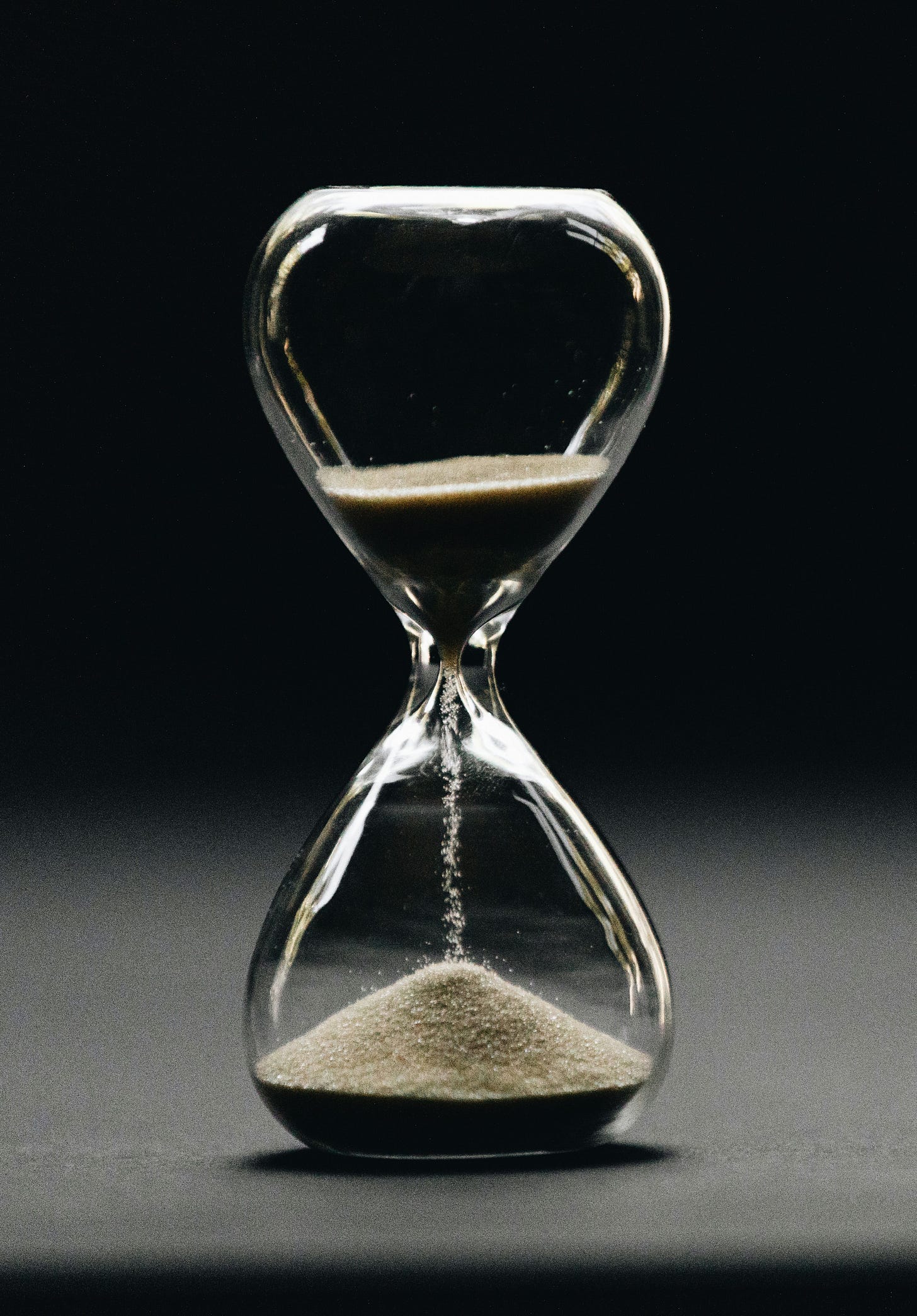5 effective ways to improve your time management with minimum effort
Here is a list of tips you can use to be more effective in your daily life

Time is the most valuable resource we have.
There is no way we can increase the time we have. Every day has the same amount of hours. We can only decide how we want to spend our time. Time management is all about being intentional with our time.
For this reason, in this post, I want to share five tips that helped me be more effective with my time.
1. Focus time 🧘
Focus time is a scheduled time in your day when you are free of distractions and focus on your tasks.
It doesn’t matter if you focus on your work or personal stuff. The only thing that matters is scheduling some distractions-free time to do that. Focus time is beneficial when you have a long task, which you estimate about one hour.
When you have that, you can follow these steps:
Block time on your calendar. This way, everyone will know you are busy.
Turn off the internet connection on your smartphone. Doing so, you won’t receive messages or notifications, but in case of an emergency, people can still call you.
Turn off notifications on your computer (if you are using it).
Focus time is about being intentional with your time.
You decide how to spend that specific amount of time. I can assure you that you’ll feel the difference immediately. You’ll soon realize that focusing on a single task will make you very effective, and you’ll be able to finish it in less time than expected.
This technique goes together with the next one, the Pomodoro technique, which will help you structure your focus time.
2. Pomodoro 🍅
While your focus time can be two hours, being effective for two hours straight is unlikely.
Instead of focusing for two hours, dividing a big time slot into smaller slots is more efficient. The Pomodoro technique divides a large time slot into smaller sessions of 30 minutes. Each 30-minute slot consists of 25 minutes of work and 5 minutes of rest. You need a timer for this technique, but many apps are also available that are specific to this technique. I use Goodtime Productivity, a minimal Android app that also disables my notifications during the Pomodoro session.
These are the steps I follow during my focus time:
I open my phone and start the Pomodoro.
After 25 minutes, I get the app’s notification that it is time to rest, so I stop working.
During rest time, I can go to the bathroom and drink water. Don’t go to social media or check your emails. I’ll come to that later.
When the rest timer is finished, I start a new session.
Make sure to use your “rest time” to rest your brain. Checking your emails, answering messages, and scrolling your social media feed is not ideal because your brain doesn’t switch off effectively.
3. Batching 📚
Focus time is excellent for long tasks, but during our day, we have several small things to do; what about that?
This was a big issue for me. During my day, I have several small tasks of 5 minutes or less. I check my emails, send emails, answer messages, pay bills, etc. If you answer messages as soon as you receive them, you’ll have to stop doing what you do every time you receive a message.
To solve this problem, I use the Batching technique.
The Batching technique consists of putting together some of the smaller tasks you must do in your day in a single time slot. To do that, it is crucial to turn off your notifications, at least during your focus time. You need to schedule some time during your day to do small tasks. It is a recurring time for me; I know every day at 12 am and 6 pm, I have 30 minutes to do my small tasks. This frees the rest of my day from continuous interruptions.
All the small tasks in my day are concentrated in those time slots.
If I don’t do some things right away, I will forget them! Don’t worry; the next tip is about that.
4. Journal 📝
In our daily lives, information comes at any time.
Tasks can appear at any moment, but, as I said before, doing tasks as they come is inefficient. The goal is Batching. So, to avoid forgetting about those things and yet keep focus on what you are doing right now, you need to save it somewhere.
Write tasks down as they come.

Writing tasks on paper or digital notes will free your brain from the idea of “don’t forget it.” With time, you’ll develop the ability to do this with minimum effort. It will be muscle memory, and you won’t lose your focus.
Doing so will result in a list of tasks you can check during the Batching time.
I use a paper notebook for some things and LogSeq. If you want to know more, you can check this post:
5. Quest 🐉
Having many priorities is like having no priority at all.
Have you ever looked at your to-do list feeling you don’t have enough time to do everything? I have at least ten new things to do every day, and I think I can’t accomplish even half of those. The thing is, most of them are not essential or urgent.
Choose a single task that is your Quest.
I like role-playing games like Dungeons and Dragons. In D&D, characters play their daily life; they go to the tavern, drink together, and go to the market to buy and sell stuff. But the reason why people play D&D is because of the adventures. Characters live adventures, and every adventure has a goal: save the princess, kill the dragon, find the treasure, etc. That is the Quest.
If you can finish your Quest, that’s enough for today.
The Quest is the one thing you need to focus 100% of your efforts on. I find this approach incredibly comforting. I cannot concentrate if I know I must do ten things today. I don’t care about those tasks until I’ve done my Quest.
By the end of the day, you can feel accomplished if you finish your Quest but still have other things to do.



